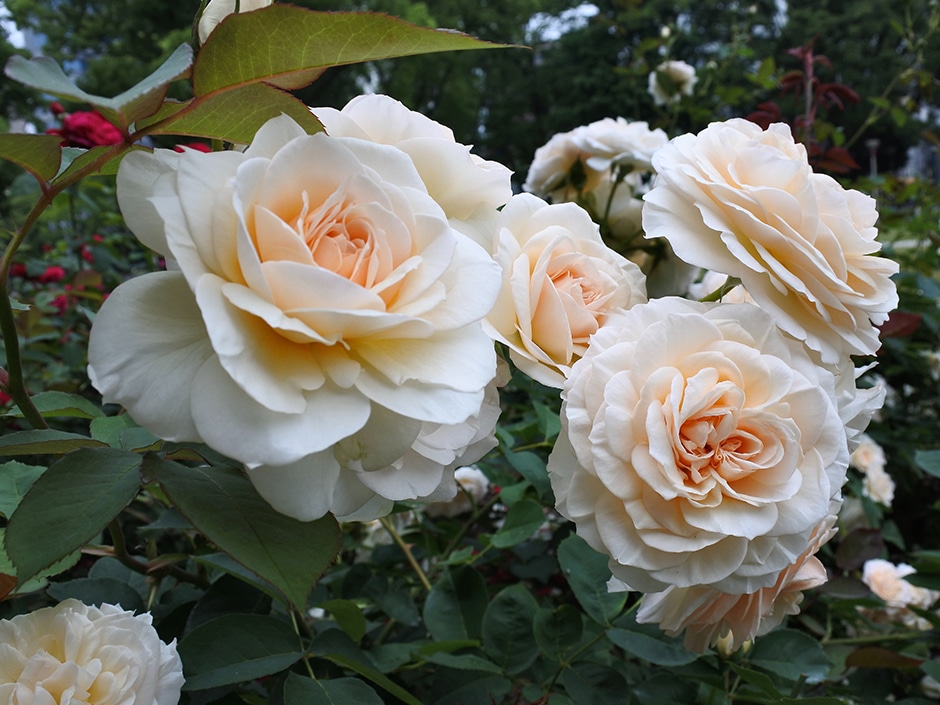Know your roses: the basics
DIY and how-to

Have you always admired a beautiful, flourishing rose garden, but never thought you could quite achieve it yourself? Our experts have compiled these useful tips to help you on your journey to your own beautiful, blossoming blooms.
CHOOSE THE RIGHT ROSES
When buying roses, opt for classic varieties from the World Federation of Rose Societies Hall of Fame, such as Peace, Queen Elizabeth, Iceberg, Double Delight and Just Joey. For the full list, click here. Alternatively, choose modern, disease-resistant varieties developed after 2000.
TOP TIP:
If you’re looking for hassle-free roses, try floribundas or ground covers. Both are fairly disease-resistant and require little pruning.
DECIDE WHAT YOU WANT FROM YOUR ROSES
If it’s fragrant roses you’re after, try English roses or Antico Moderno varieties. For beautiful roses to cut and display in your home, hybrid tea varieties are the best option. If you’re looking to add a bush to your small garden, choose standard roses that won’t take up too much space.
PLANT THEM IN THE RIGHT SPOT
Roses need at least six hours of full sunlight every day to really thrive. It’s also important to make sure that you don’t plant them too close to other shrubs, as poor air circulation can lead to fungal diseases.
WATER THEM WELL
The average rose bush needs about 10 litres of water a week. Remember to water your rose bushes thoroughly twice a week – or more in very hot, dry weather.
REMEMBER TO FEED THEM
Roses should be fed with a specially formulated rose fertiliser in granular form – 5:1:5 and 8:1:5 are two of the most popular options. Give each bush a handful twice a month and remember to water well afterwards.
PINCH PRUNE THEM WHILE THEY FLOWER
Let’s quickly explain ‘pinch pruning’: compared to your regular pruning cycle and technique, pinch pruning is ideal while your roses are flowering, and is done with your fingertips. This helps to spread the flowering cycle and stimulates root and leaf development. Simply snap off the tip of a new shoot that has sprouted from an eye and has developed five to seven leaves, but make sure that you only pinch prune about a third of the stems.
You might also like
Shop online
-
PLASTIC POT GREEN 7.5CM – 38CM
- R9.99 – R149.99
- Select options This product has multiple variants. The options may be chosen on the product page Learn More
-
- Sale!
KITTEN MAINE COON 4KG
- Original price was: R839.99.R671.99Current price is: R671.99.
- Add to cart Learn More
-
FINALSAN 500ML
- R219.99
- Add to cart Learn More




